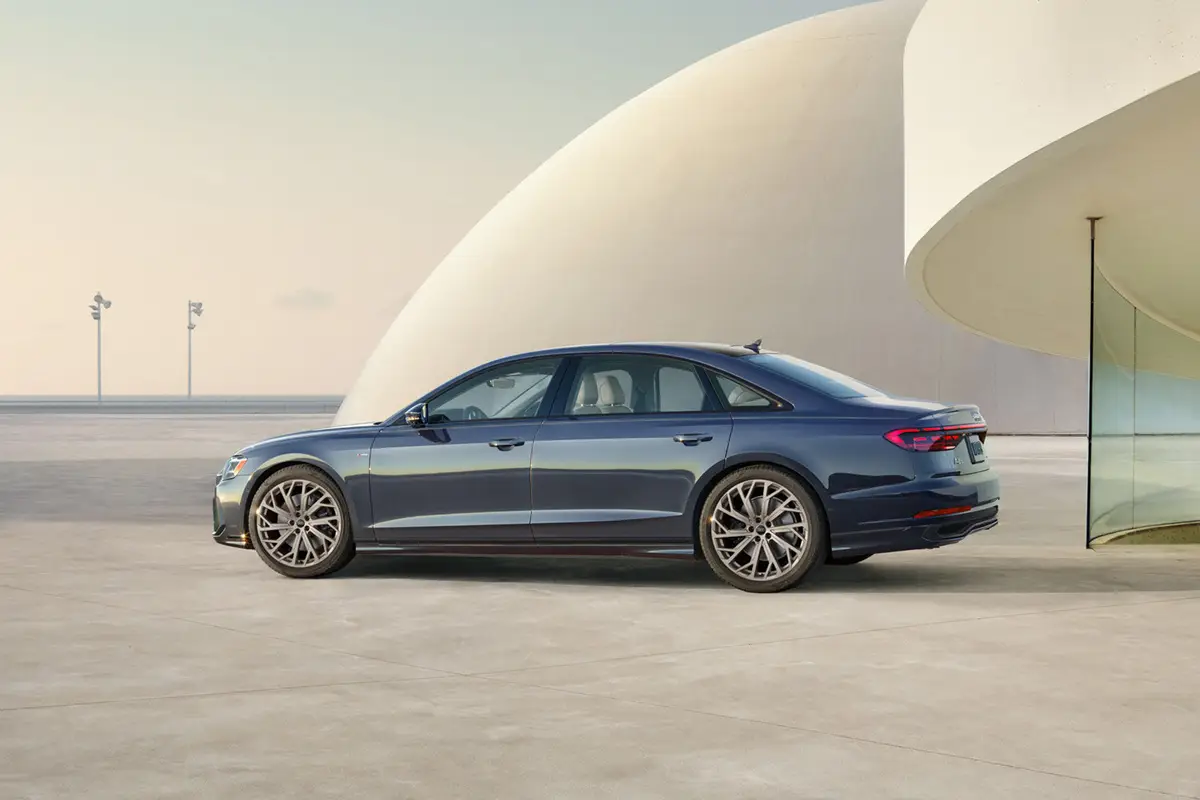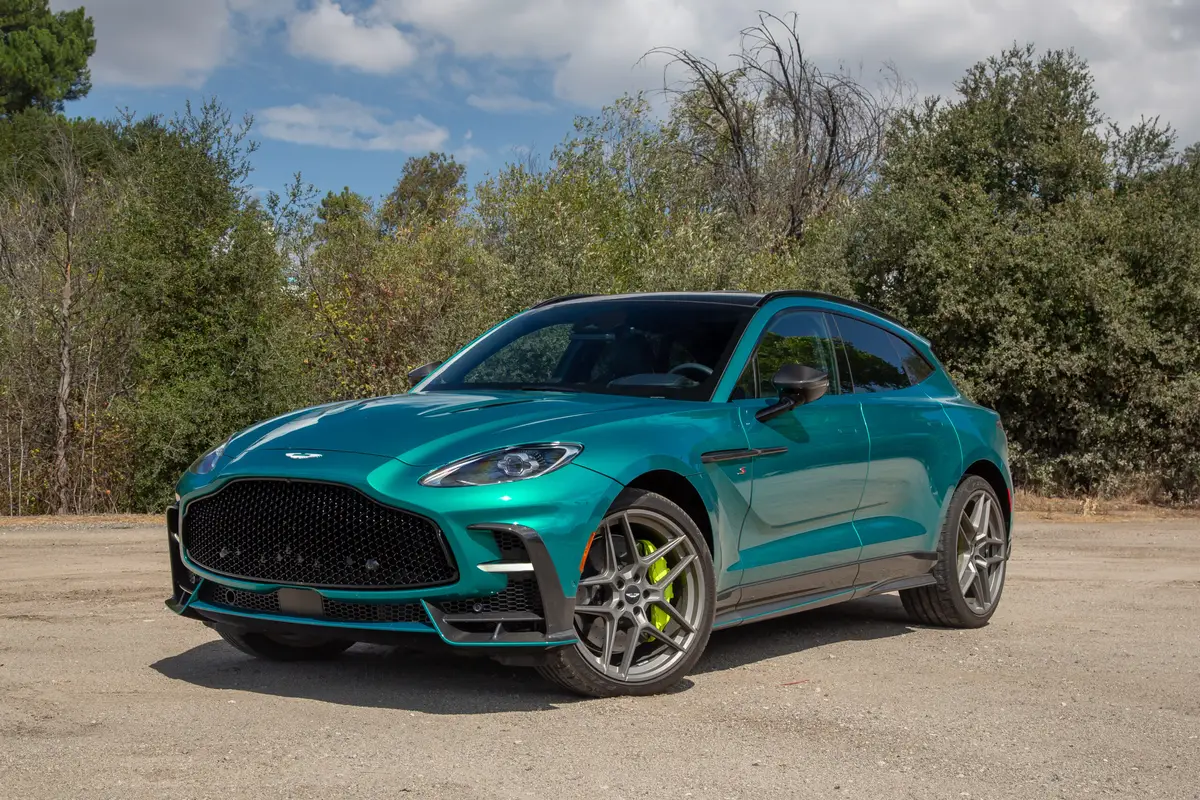The Morning Call and Mcall.com's view
The Lincoln Continental had its beginning back in 1939 as a specially built car for Edsel Ford. Back then (and even today) it was a knockout. It had a long, low, horizontal look and a lot of class. One of its styling features – a rear mounted spare tire – was even an anachronism in its day. But this particular styling feature became known as the Continental Spare and has existed – in various forms – for 45 years.
Today the Continental Spare still distinguishes a Lincoln Continental. The Mark VII, the latest of the series, has a contemporary, softly rounded, aerodynamic look but when you look at the trunk deck you can see impression of a spare tire. For such an up-to-date car, this at first may seem a bit strange, but it certainly informs anyone who knows anything about cars where its heritage came from.
The new car, like the original still has a lot of class. It is still new enough and scarce enough to be confused with the Ford Thunderbird which is understandable, they do look alike. But, then, the same person design manager of the Mustang, Capri, Cougar, Continental and Lincoln Town Car. The Mark VII has an understated look about it and only a minimum of exterior ornamentation. In other words, it is the type of design that could last a long time without getting dated.
Styling is not the only thing the Mark VII has going for it. It is an innovatively engineered car that could very well appeal to those who are buying the expensive European luxury cars, in particular the German cars. Exactly what the Lincoln Division had in mind.
The test car, a Turbo Diesel model, apparently is an entry into that market. Not only is it competing with the German cars, it has a Teutonic engine and transmission to make things a little more interesting.
The Mark VII’s turbocharged diesel has been designed and built for Lincoln by BMW Motoren of Steyr, Austria. It is an inline six-cylinder engine that displaces 149 cubic inches (2.4 liter) and is rated at 115 horsepower at 4,800 rpm and 155 foot pounds of torque. When compared to a gasoline engine, these figures won’t knock you out but for a diesel, this engine’s specific output – power produced per cubic inch – is high. In fact, it is one of the most powerful passenger car diesel engines available today. The turbocharger is, of course, what really boosts the engine’s power. (Briefly, a turbocharger is sort of an air pump that operates off exhaust gases. It provides a bigger charge in the combustion chamber which subsequently increases power.)
The overhead cam engine features something quite rare these days diesel smoke emitting from these pipes can almost obliterate the car behind you. All diesels are smokers but this one seems to be a bit heavier smoker than most. To an extent, this could probably be attributed to the dual exhaust system. The engine is angled at 20 degrees for hood clearance and with all of its expe nsive aluminum alloy castings is quite impressive looking.
The turbodiesel engine has its own transmission – a ZF four-speed automatic overdrive unit with lock up torque converter. ZF is a German transmission manufacturer and supplies transmissions for other expensive European cars. The transmission features wide-ratio gearing which gives low gearing at the bottom end for performance and high gearing at the upper end for better fuel economy.
Diesels do not perform the same as gasoline engines. They are slower. Even turbocharged diesels are slower than comparable gasoline engines. The Mark VII is not a bad performer. In fact, its pretty lively but, like other diesels, it has to be driven differently. You put your foot into it and leave it there. That is, if you want to go anyplace. You can’t just give it a little accelerator pressure and expect it to jump out. It takes a little bit of re- learning to drive but it is not all that bad.
Diesels, however, hav built their reputation on high fuel mileage and that is where the Mark II is particularly impressive. The test car average 32 miles per gallon for interstate and turnpike highway driving and 21 miles per gallon for city driving. These figures would even be impressive for a small car. EPA estimates are 25 mpg city/39 mpg highway. Since the Mark VII has a 22.3 gallon fuel tank, it doesn’t take much figuring to realize it has a long, long range.
Although the Mark VII is a fairly good sized car – wheelbase, 108.5 inches; length, 202.8 inches; height, 54 inches; width, 70.9 inches, and curb weight, 3,625 pounds – itis not what you could call a roomy car. Because it was designed as a personal/luxury car five people could fit in but it would be a squeeze. Front seat room for driver and passenger, though, is quite good. The trunk, rated at 15 cubic feet, isn’t particularly big nor is it laid out all that well. In other words, you have to pack carefully.
Creature comfort, though, is very high throughout the car. Although the diesel engine is noisy, it is only noisy to those on the outside. Inside, you are in splendid isolation. No outside noise enters this car. The Mark VII also has an impressive ride which should be expected from a Lincoln, however, it also handles quite well. Both the ride and the handling can be attributed to its electronically controlled air spring suspension. The Mark VII is the first American car to offer this suspension system is built around air springs and incorporates automatic constant front-to-rear and side-to-side self-leveling. Combined with nitrogen-dampened shock absorbers in the rear and nitrogen- charged MacPherson struts up front, the computer-controlled air spring system can offer both ride and handling. A pretty neat trick for a luxury car.
The Mark VII Turbo Diesel has a base price of $22,930. Standard equipment includes automatic air conditioning, tilt steering wheel, power doorlocks and trunk deck, electronic stereo search radio with power antenna, electronic instrument panel (including a 12-button keyboard trip computer), 100 amp alternator, special sound package, engine/fuel/air heater; four-wheel power disc brakes, tinted glass, interval windshield wipers, dual power outside mirrors, cast aluminum wheels, P215/65R15 performance tires, engine oil cooler and a bunch of other items. Of particular interest is the fact that the Mark VII has a 5 mph bumper system, something not required by federal law but something that should save you on insurance payments.
With a destination charge of $524 and some $2,500 worth of options, the test car had a bottom line of $25,964. Options included leather upholstery, $551; illuminated entry system, $83; headlamp convenience system, $190; leather wrapped steering wheel, $99; dual six-way seats, $416; upgraded radio, $170; handling package, $243; dual illuminated vanity mirrors, $156; premium sound sy stem, $206, and compass/thermometer group, $191.
Latest news



